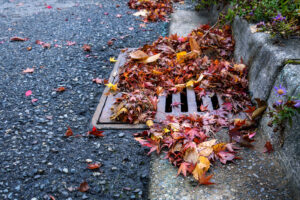Winter is coming, and with it comes unpredictable weather, extreme storms, hail, freezing rain, melting snow, and everything in between. As a municipality, effectively preparing for the winter season is essential to protecting infrastructure integrity and maintaining community safety. Effective winter planning can lead to reductions in energy and maintenance costs, improved local reputation, decreases in emergency repair costs, and longer equipment and infrastructure lifecycle expectancies.
To help you get started, we’ve outlined 6 key elements to include in your municipality’s winter preparedness plan:
- Implement preventative road maintenance
Roads provide economic and social benefits throughout the year by connecting our communities. Begin preparing ahead of the winter months by conducting inspections and addressing potholes, cracks, and debris during the warmer seasons. Proactive inspections of both roads and sidewalks streamline the maintenance process and reduce the risk of failure during the winter months.
Develop a detailed snow removal plan in collaboration with your local and government-run snow removal teams. Incorporate a de-icing and salting plan, utilizing GIS tools and maintenance management software to prioritize essential routes and coordinate tasks.
Power system and electrical grid failures are common during winter storms and extreme weather. If you are responsible for these systems, make sure to conduct inspections of power grid infrastructure ahead of the season, and insulate and reinforce vulnerable power lines to prevent power outages. Power failures put citizens at risk both on the road and at home, so ensure you’re also developing reliable communication and action plans in the event that this does occur.
- Inspect and protect municipal buildings and spaces
Municipal buildings provide communities with centers for connection, recreation, and administration, making them essential all year round. Start by conducting roof inspections on all municipal buildings, focusing on shingles, gutters, and structural components. Make any necessary repairs to ensure that buildings are reinforced before snow accumulates. Roof maintenance is essential particularly during winterization to avoid the risk of snow dams and cave ins.
When snow falls, ensure that it is cleared quickly to avoid dangerous snow and ice building up and falling onto walkways and public spaces. Clear public walkways of debris like leaves and fallen twigs, make salt or sand readily available nearby, and repair any cracks or holes.
In parking lots, prepare for snow removal by marking obstacles clearly with stakes and reflective materials, as well as repairing any surface damage. Doing so reduces further damage and ensures efficient plowing. Inspect exterior appliances to ensure they are up to date and meeting capacity requirements before securing and winterizing them.
- Prepare municipal fleets
Municipal vehicles, particularly snow plows, tow trucks, and emergency vehicles, provide essential services throughout the winter. They must be inspected, winterized, and shielded from the elements to ensure their reliable use when they are needed most. Winterize the entire municipal fleet by checking key elements such as tire tread, antifreeze levels, headlights, wiper blades, mirrors, and battery health.
Designate sheltered areas to protect emergency vehicles from snow and ice buildup, ensuring they remain accessible in any weather. Keep extra gas and essential supplies on hand for emergencies.
Leverage public works software like Asset Management and maintenance management systems to ensure that the fleet is effectively inspected and maintained. Automate maintenance schedules, inventory tracking, and regular inspection alerts through maintenance management software, keeping vehicles in optimal condition throughout the season.
- Equip indoor spaces
As the weather cools, indoor spaces like municipal offices and community centers naturally face increased traffic, making their maintenance more important. Inspect HVAC systems, boilers, heaters, and pipes ahead of time. Check windows and any gaps that compromise indoor insulation, like weatherstripping, and make any necessary repairs to ensure that indoor spaces can be kept warm and dry. Insulate pipes in unheated areas to avoid freezing and costly repairs.
Be sure to set indoor temperature minimums of 4ºC (39.2ºF) to avoid cold weather damage to non-winterized infrastructure. If you forecast a severe winter season or are prone to such conditions, be proactive by distributing emergency kits in public spaces to ensure citizens are prepared for any unexpected events.
- Ensure community safety
While preparing for winter, prioritize citizen safety every step of the way. Keep in mind the people who may not be able to leave their houses during strong winds, heavy snowfall, and closed roads. Provide emergency resources ahead of the winter season, as well as emergency plans for citizens to download online on your government website or pick up in public buildings to ensure that your community knows how best to prepare themselves and their property.
Develop emergency plans to distribute amongst municipal employees and divisions, local businesses, emergency services, and any relevant community groups. Keep stock of these resources and update your emergency plan regularly in accordance with community growth and changes.
Communication with your residents through government social media and websites is critical. A wide range of emergency services like warming centers, evacuation routes, snow-plow prioritization streets, and more can be mapped in your GIS and shared through public maps on your official website. This is an ideal way to ensure everyone is kept informed of road closures, emergency weather statements, and ongoing activities as well as understand how your municipality plans to deal with severe weather.
- Standardize and Record Winterization Plans
The final step to effective winter preparedness is to document your plan for the future. You can lay the groundwork for future seasons by recording every action required for winterization in your municipality. This is much easier with maintenance management software, where such activities can be saved and easily activated each year. These systems can help you map out the assets involved, auto-schedule winter inspections, and coordinate maintenance tasks – driving greater organizational efficiency and opportunities for standardized winterization plans being deployed year after year.
How PSD Citywide Can Help
PSD Citywide’s suite of Enterprise Asset Management (EAM) software applications are built to strengthen municipal resilience from all winter events. Our Citywide Maintenance software captures staff and citizen service requests while scheduling and automating preventative maintenance. Citywide Assets allows you to track and locate assets, view complete asset histories, and monitor changes over time while Citywide GIS can help you map these assets and share important maps with the public through your website.
Leveraging PSD Citywide for your winter preparation needs will give you full control over your asset and maintenance management. Contact us now to weather winter storms with a truly unified EAM platform for your municipality.



